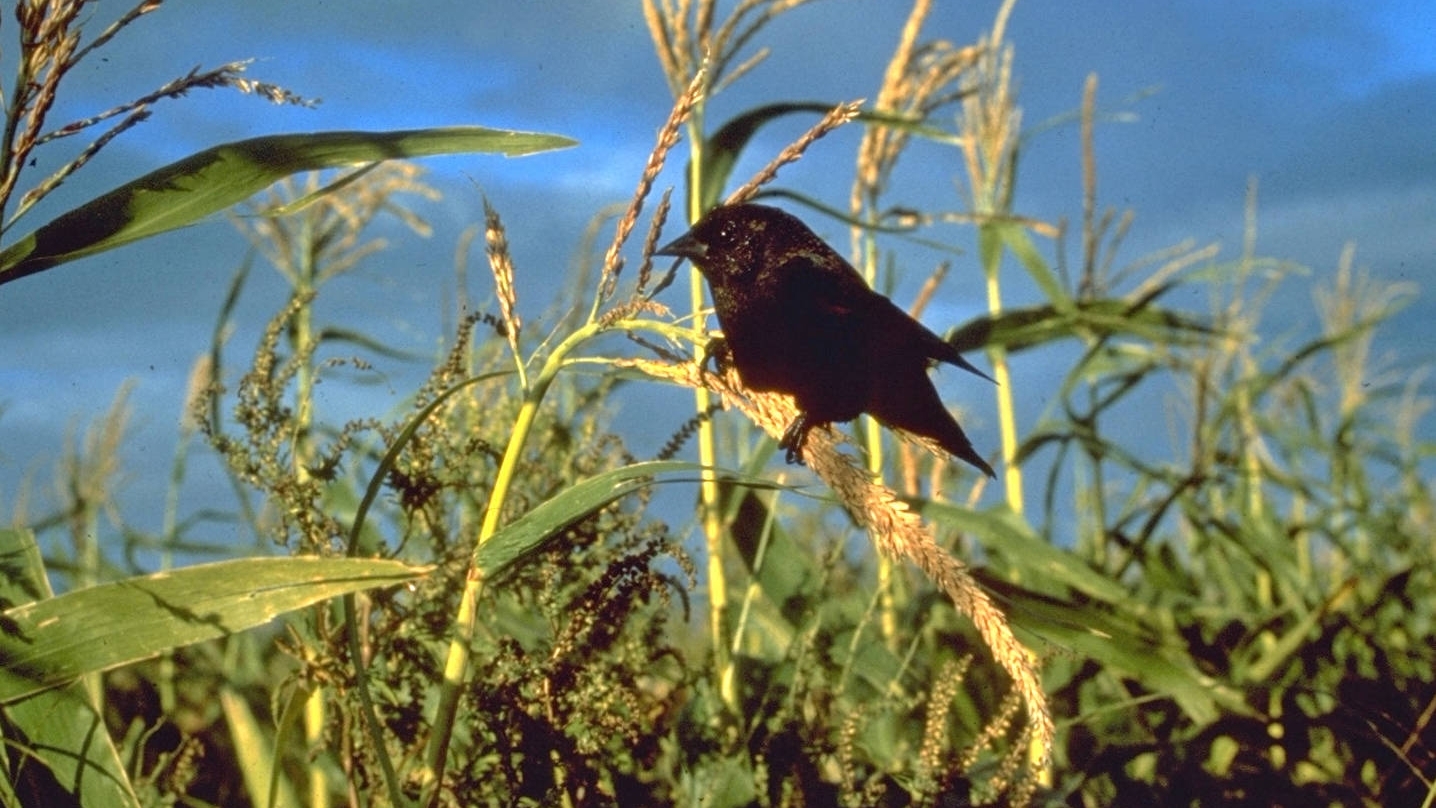NWRC Research Areas: Bird Damage

Our scientists are developing methods to reduce bird damage to agriculture.
In the United States, European starlings, blackbirds, and crows are abundant and widely distributed, with their winter populations believed to be between 750 million and 1 billion. The estimated annual damage to grain, fruit, and berry crops from these birds exceeds $150 million in direct costs. Additional costs, not estimated, include those spent to prevent human health and safety hazards and those from damage abatement efforts.
Overall blackbird damage to agricultural crops: Blackbirds annually damage >$15 million in sunflower, $15-25 million in ripening corn, $20-50 million in seeded corn, $10 million in ripening cherries, $6 million in sorghum, >$20 million in rice, $4 million in grapes, $1-2 million in blueberries, $1 million in lettuce, and unknown dollars of cereal grains, peanuts, and pecans.
Blackbird damage to sunflower: Large flocks of blackbirds congregate in the northern Great Plains from August to October in preparation for a strenuous migration to southern wintering areas. Blackbirds acquire energy for migration by eating agricultural crops, especially sunflower. Red-winged blackbirds, common grackles, and yellow-headed blackbirds cause most of the damage. Sunflower producers in North Dakota and South Dakota annually lose $4-7 million.
Bird damage to fruit: Blackbirds and European starlings, along with songbirds, consume and damage fruit throughout the United States. In addition to consuming the entire fruit, damage also reduces fruit quality and makes it susceptible to other pests and pathogens. As a result, fruit producers lose tens of millions of dollars each year to birds.
Blackbird damage to feedlots and dairies: Blackbirds and European starlings also congregate at feedlots and dairies throughout the United States. Large flocks of birds can consume and contaminate feed and may contribute to disease transmission. In addition, accelerated corrosion of fencing, corrals, and other infrastructure can occur due to the birds' acidic fecal matter.
Research under this project focuses on the following:
- Frightening devices – evaluating the ability of drones and other auditory and visual deterrent tools to disperse nuisance birds
- Cultural practices – studying how seasonal timing, siting, and spacing of crops along with surrounding landscape influence distribution of birds and crop damage
- Wildlife conservation plots - evaluating alternative crops (e.g., oilseed hemp) for use as decoy crops to protect sunflower or other high value commodities
- Avian ecology and behavior – studying how blackbird movement, migration, and breeding influence autumn bird populations and distribution
Related Links
Solutions Through Science: Protecting Sunflowers from Blackbirds Brochure (3.78 MB) (Brochure)
Blackbirds and Starlings (Publications)
Contact Us
Bird Damage
Page Klug, Project Leader
Email: page.e.klug@usda.gov
Phone: 701-231-5190
North Dakota Field Station
North Dakota State University, P.O. Box 6050
Fargo, ND 58108-5060

